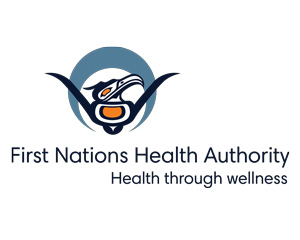National Injury Prevention Day, held annually on July 5, is a day to focus on the importance of knowing what we can do to avoid preventable injuries, which are the leading cause of death in Canada for people 44 and younger.
Seventy-five per cent of injury-related deaths are from falls, motor vehicle crashes, and accidental poisonings. Drownings and violence are also causes of injury-related deaths. Many of these life-changing or life-ending injuries could have been prevented by using seatbelts, helmets, or life jackets – or by not texting, consuming alcohol, or smoking marijuana while driving, boating, or swimming.
We all want to live long, healthy lives, and we want the same for our loved ones. In our role as physicians, we have seen too many preventable injuries up close, and strongly encourage you to read on to learn more about staying safe.
Being informed can help prevent serious injuries in First Nations communities
Currently, the First Nations Health Authority (FNHA) supports injury-prevention education through community-based programs such as Aboriginal Head Start On-Reserve (AHSOR), which includes an injury-prevention component to teach workers and parents about providing safe and healthy environments for children.
AHSOR promotes community well-being efforts through land-based learning; connections with plants, foods, and medicines; and education. Trainings have a particular focus on early years and the holistic vision of wellness, culture, and language, nutrition, and social support, as well as parental and family involvement.
Another good program that emphasizes the importance of injury prevention from an early age is the First Nations Child Seat Share Cooperative, which provides education as well as access to safe, up-to-date child seats to use when transporting children.
Please visit the following links, which contain important information about preventing injury:
Recognizing and uprooting the causes of high injury rates in First Nations communities
In Canada, the First Nations population experiences a significantly higher (3.5x) number of hospitalizations and deaths due to injuries as a result of profound inequities (unfair and avoidable inequalities that are not inevitable or natural, but the product of human behaviour). An unequal distribution of wealth and resources has caused unequal social, economic, and environmental conditions, which are all determinants of health. Improving health and wellness requires addressing these determinants broadly.
With respect to injury mortality rates, the extreme poverty, unsafe/substandard housing, lack of easy access to health care and other necessary services, and general isolation caused by the reserve system – wherein First Nations people were deliberately placed on remote, resource-less parcels of land – is a large part of the problem. As noted in a report by Public Health Canada about the correlation between inequalities and deaths due to injuries, “The inequities experienced by First Nations, Inuit, and Métis populations are a direct result of colonial policies and practices that included massive forced relocation, loss of lands, creation of the reserve system, banning of Indigenous languages and cultural practices, and creation of the residential school system."
And, as noted in a report by the Canadian Paediatric Society about preventing injuries to Indigenous children and youth, “Indigenous peoples generally are at a higher risk of motor vehicle crashes because their communities are isolated, health care facilities are harder to get to, road conditions are generally poor, and hazardous machines such as all-terrain vehicles (ATVs), boats, and snowmobiles are used frequently or in unsafe conditions, often by necessity. Although Indigenous peoples comprise about five per cent of the Canadian population, they account for approximately 26 per cent of drownings which involve a snowmobile, 16 per cent of drownings after a fall, 10 per cent of drownings during recreational aquatic activities, and nine per cent of drownings related to boating activities."
To effectively offset these inequities and help reduce injuries in First Nations communities in BC, the FNHA gathers information related to existing programs and services with a view to building on, customizing, developing, or promoting them. We do this in collaboration with our national and regional partners including Indigenous organizations, First Nations communities, non-government organizations, provinces and territories, and researchers.
The FNHA also monitors the different types of injuries and their trends among First Nations people in BC. This helps us in promoting best practices; identifying priorities for knowledge translation, dissemination and exchange; and contributing to the development of tools to assist First Nations to create community programs and environments that prevent injuries.
While we recognize the need for – and continually advocate for – improvements in access to health services (including mental health services) for First Nations people across BC, we also recognize the importance of strengthening the community support system, a concept deeply rooted in First Nations culture. So, we support programs that build local capacity and involve First Nations individuals, parents, health care providers, and community leaders – programs that are based on best practices, collaboration and sustainability.
Again, it is so important for each of us to realize that many serious injuries are preventable, and to keep ourselves informed. We hope you will take the time to review all of the links in this message. Please stay safe this summer and beyond.

